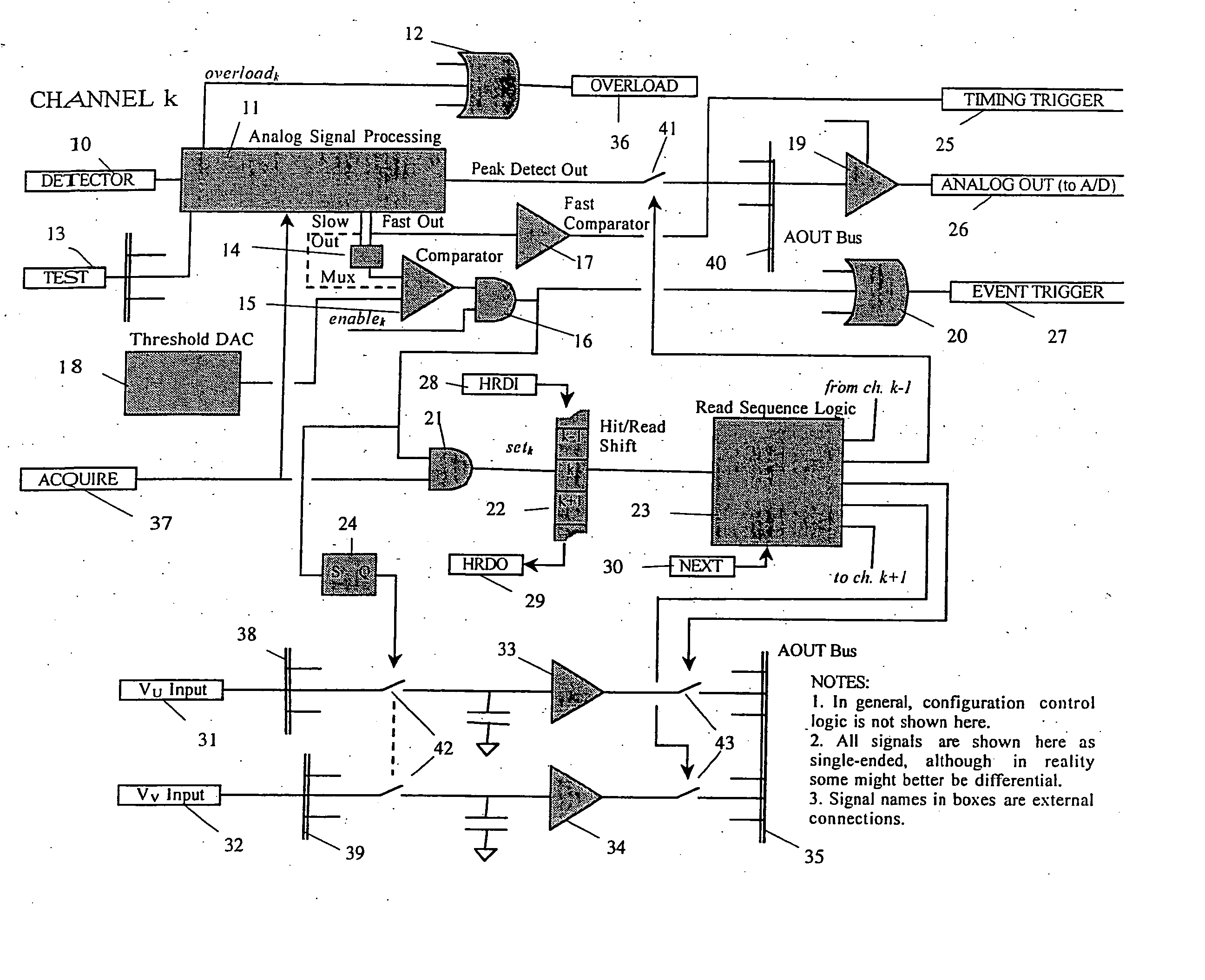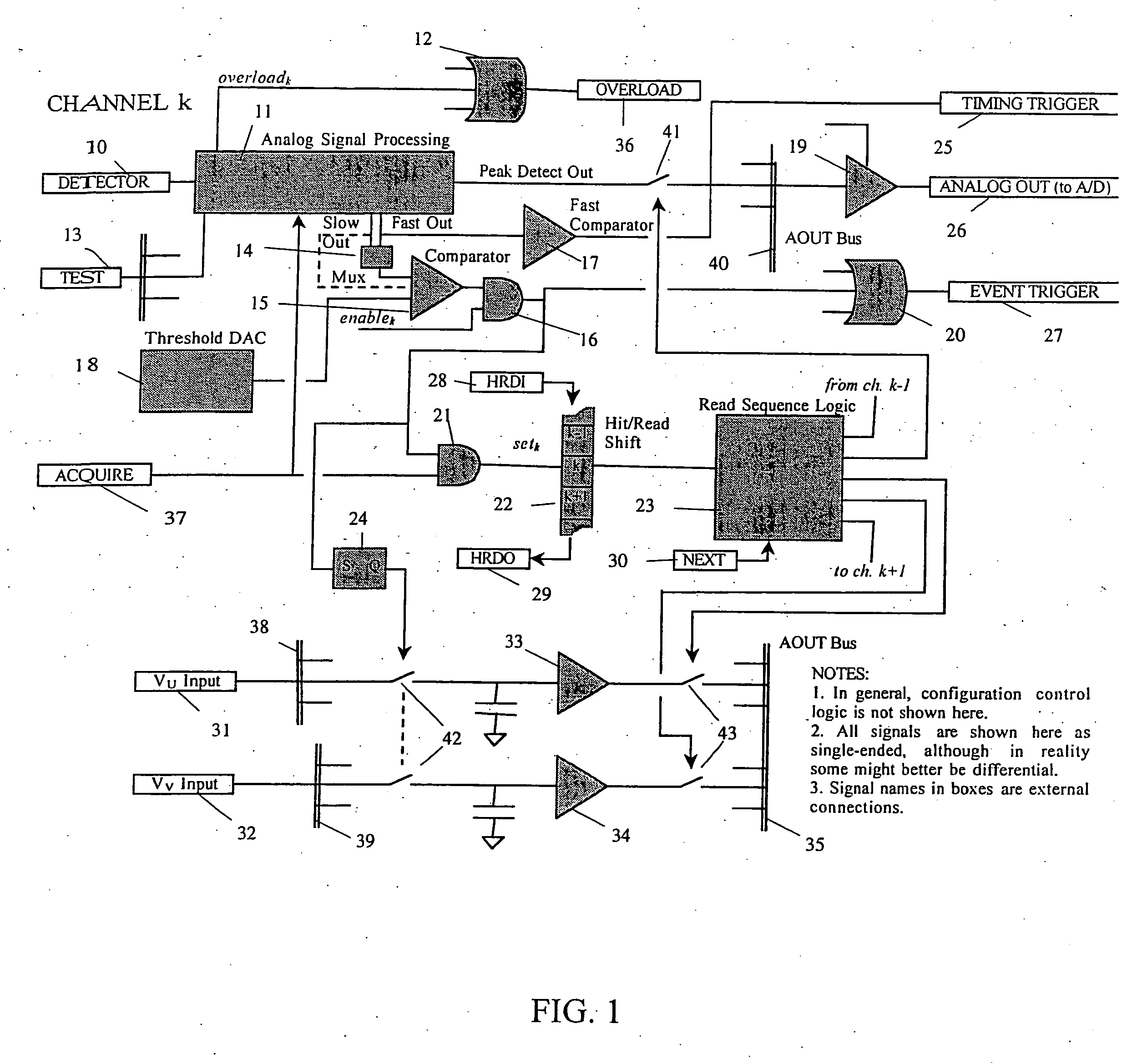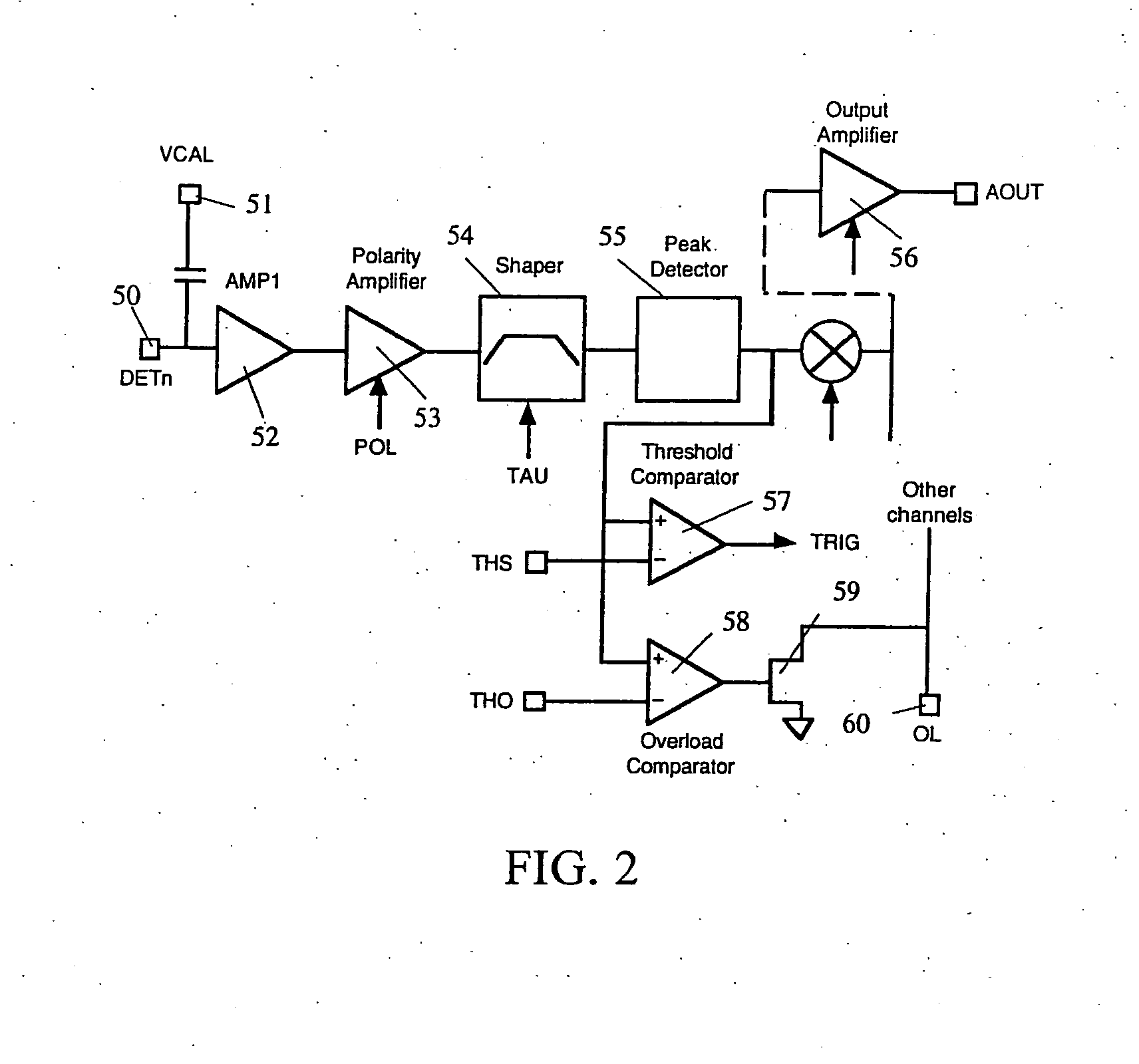Multi-channel integrated circuit
a multi-channel integrated circuit and integrated circuit technology, applied in the field of multi-channel integrated circuits, can solve the problems of inability to read out conventional discrete or hybrid electronics, inability to achieve high inability to achieve good quantum efficiency for higher-energy x-rays and gamma rays, etc., to achieve fast trigger output, low noise, and the effect of handling large rates
- Summary
- Abstract
- Description
- Claims
- Application Information
AI Technical Summary
Benefits of technology
Problems solved by technology
Method used
Image
Examples
Embodiment Construction
[0034] Referring to the ASIC described in FIG. 1 a detector 10 is connected to the input of the ASIC and the input goes to an analog signal processing unit 11. The FIG. 1 shows only one of the analog channels of the ASIC, the k channel. Analog processing unit is described below. Peak detector output of the analog signal processing unit 11 goes to analog output buffer amplifier 19 through a switch 41 controlled by read sequence logic 23. The peak detect output is also attached onto a bus 40 before it enters analog output buffer 19. Analog output is made available to the outside world as an output 26 of the ASIC. A test input 13 is used to test the analog signal processing unit. An overload sensing element 12 is connected to the analog signal processing unit 11. Output of the overload sensor 36 is provided to outside world as an output of the ASIC.
[0035] Analog signal processing unit 11 outputs a slow and fast shaper signal during processing of the signal from the detector 10 which g...
PUM
 Login to View More
Login to View More Abstract
Description
Claims
Application Information
 Login to View More
Login to View More - R&D
- Intellectual Property
- Life Sciences
- Materials
- Tech Scout
- Unparalleled Data Quality
- Higher Quality Content
- 60% Fewer Hallucinations
Browse by: Latest US Patents, China's latest patents, Technical Efficacy Thesaurus, Application Domain, Technology Topic, Popular Technical Reports.
© 2025 PatSnap. All rights reserved.Legal|Privacy policy|Modern Slavery Act Transparency Statement|Sitemap|About US| Contact US: help@patsnap.com



